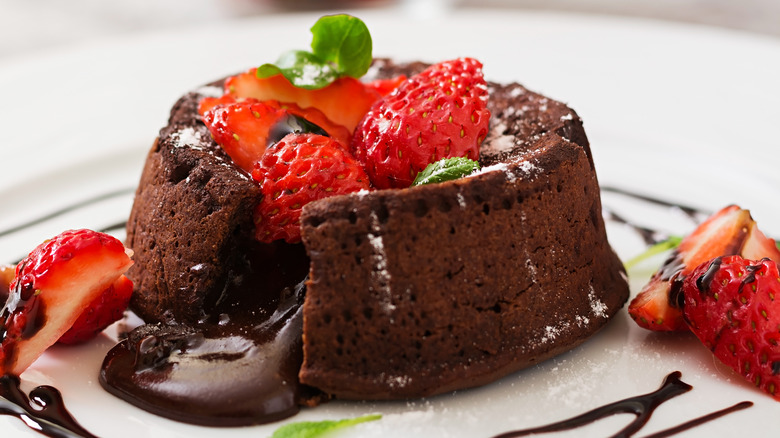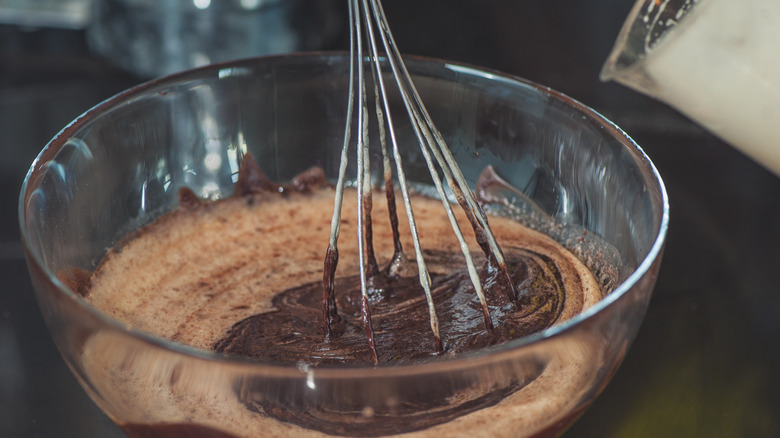The Science Behind Molten Chocolate Lava Cakes
Cooking is an exercise in following intuition. Tasting as we go, we experiment and alter recipes to suit our preferences, adding a touch of this and a dash of that. However, baking is more of a science, requiring exact temperatures and measurements to achieve a specific result. Few oven-baked treats prove this point better than molten chocolate lava cake.
While the rich chocolate cake with a decadent, gooey center can be made in just a few easy steps, there is little room for error. With success relying heavily on chemistry and physics, everything from mixing the batter to the oven temperature to the cooking time has to be just so.
The batter is made by folding together two wet mixtures: One consisting of melted butter and dark chocolate and another made of eggs, additional egg yolks, and sugar. Because the chocolate and butter mixture is warm and the egg and sugar mixture is room temperature, if the former is too hot or added too quickly, you risk denaturing the proteins and prematurely cooking some of the egg. As such, the chocolate and butter mixture should be tempered to around 100 degrees (no hotter than 115 degrees) and stirred into the egg mixture little by little.
Knowing when to say when
Once the chocolate and butter mixture has been successfully added to the egg and sugar mixture, it's time to whisk in the flour. During the whisking process, starch particles from the flour release polymers that link together to form a web, creating a viscous batter and adding a toothsome texture to the final product. Whisking also works to emulsify the fat and water contained in the butter and egg, creating air bubbles that help the cake to rise.
Of course, the pièce de résistance of molten chocolate lava cake is its signature warm, gooey center. The feature that gives the treat its name is created by heat diffusion or, perhaps more accurately, knowing exactly when to put a stop to the heat diffusion. Heat diffuses as warm particles warm cooler particles around them. In the case of molten chocolate lava cake, the oven is kept at a blistering 450 degrees, quickly heating the ramekins and cooking the outer edges of the cake. The cake solidifies from the outside in, as the heat moves toward the center, warming the batter and killing any harmful bacteria. However, the cakes are pulled out after 12 minutes, halting heat conduction before the core solidifies.

